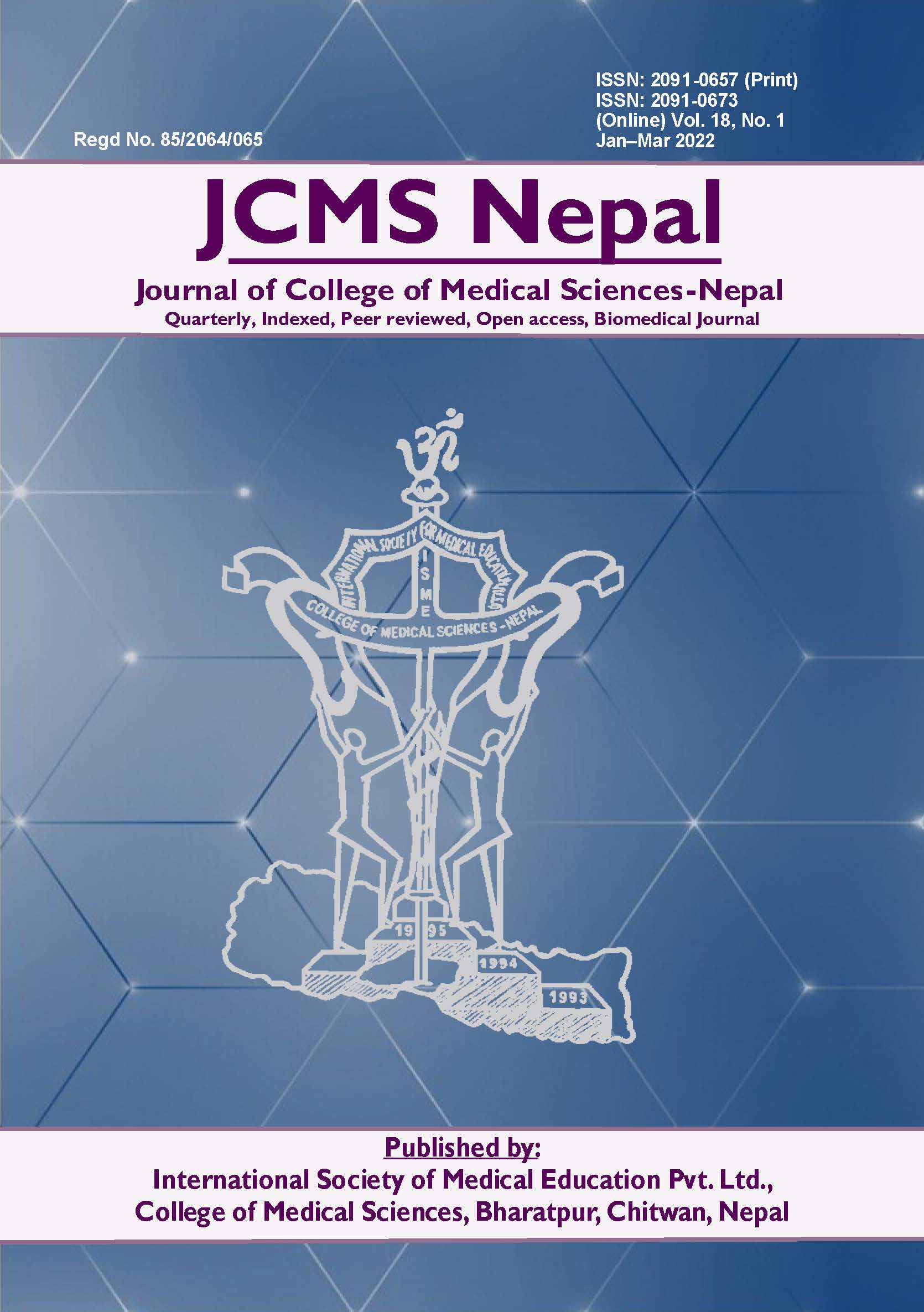Functional Outcome and Quality of Life After Surgical Fixation of Tibial Plateau Fracture in a Tertiary Care Center of Nepal
DOI:
https://doi.org/10.3126/jcmsn.v18i1.43639Keywords:
functional outcome; quality of life; tibial plateau.Abstract
Introduction
Functional outcome and quality of life (QoL) of patients will change following tibial plateau fracture fixation. There are limited studies evaluating functional and radiological outcomes following tibial plateau fixation in Nepal, and none has evaluated QoL. We aim to evaluate functional outcome and QoL in patients with tibial plateau fracture with a follow up period of more than two years.
Methods
This was a cross sectional, observational study done at Dhulikhel Hospital, from August 2021 to January 2022. Western Ontario and McMaster Universities Arthritis Index (WOMAC) functional outcome and World Health Organization QoL-8 (WHOQoL-8) questionnaire were filled by patients operated for tibial plateau fracture from 2011 to 2019. Compound fractures, untraceable patients, and those managed with casts were excluded from the study.
Results
There were 121 patients (male: female = 2.3:1) with a mean age of 37.1 years. Road traffic accidents (44.6%) were the most common mode of injury, and Schatzker type IV (30.6%) was the most common type of fracture. The average WOMAC score was 13.05±12.1 and the average WHOQoL-8 score was 30.24±4.1. The average WOMAC score in high-energy and low energy trauma patients were 17.07±12.29 and 8.21±10 respectively. The average WHOQoL-8 in high energy and low energy
trauma patients were 29.28±3.59 and 31.38±4.38 respectively.
Conclusions
Surgical reduction and stable internal fixation of tibial plateau fractures with long term follow up has a good functional outcome and quality of life. High energy trauma is associated with poor functional outcome and quality of life.
Downloads
Downloads
Published
How to Cite
Issue
Section
License
Copyright (c) 2022 Jagadish Thapa, Bikash Parajuli, Rohit Shrestha, Sabik Raj Kayastha, Nabaraj Acharya, Sudarshan Pandey

This work is licensed under a Creative Commons Attribution-NonCommercial-NoDerivatives 4.0 International License.
This license enables reusers to copy and distribute the material in any medium or format in unadapted form only, for noncommercial purposes only, and only so long as attribution is given to the creator.




